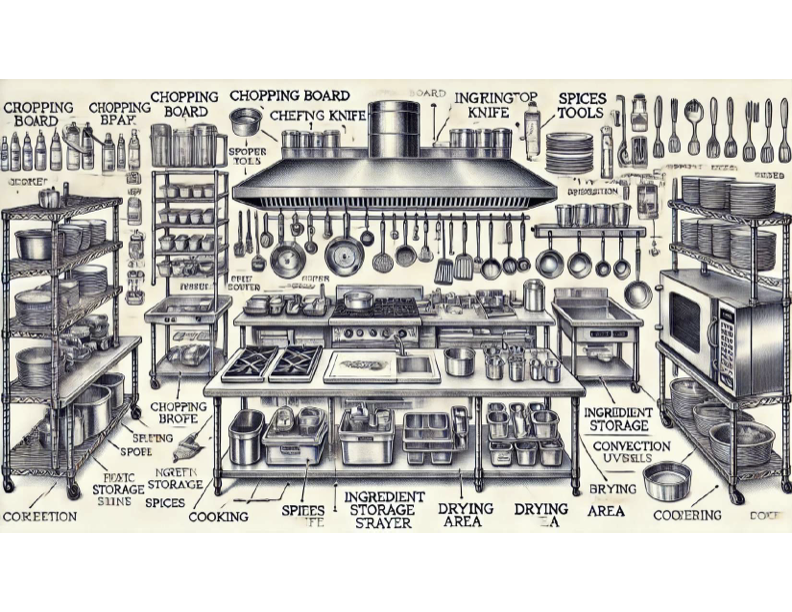In a commercial kitchen, success isn’t just about great food. It’s about speed, consistency, and control—and all of that comes down to workflow.
A chaotic kitchen bleeds time and money. An efficient one hums. The difference between the two isn’t talent—it’s systems. Workflow is the invisible backbone of any professional kitchen. It's how prep, cooking, plating, and cleanup link together without friction. When the workflow is solid, teams move like a unit. When it’s off, everything grinds.
Here’s why getting it right matters so much:
1. Time Is Money—Literally
During service, every second counts. A poorly laid-out kitchen or disorganized prep system creates bottlenecks that slow down the line. If a cook has to walk across the room for ingredients or tools, that’s wasted motion. Multiply that by hundreds of tickets, and you’re losing serious efficiency.
Smart workflow design minimizes movement. Ingredients, tools, and stations are set up to support the sequence of tasks. You build the kitchen around how the food is made—not the other way around.
2. Consistency Depends on Process
Customers expect the same dish every time. That kind of consistency isn’t about creativity—it’s about control. Workflow ensures that the same steps happen in the same order, with the same tools, every time.
That’s why mise en place isn’t just tradition—it’s workflow. Prep work done ahead of time, clearly labeled, and easy to access means fewer mistakes and faster execution. Without it, even a skilled crew can stumble.
3. Staff Morale and Retention
Nobody wants to work in a kitchen where they’re always in someone’s way, can’t find what they need, or feel like they’re putting out fires instead of doing their job. A kitchen with good flow feels less stressful and more professional.
Clear roles, defined stations, and logical sequencing allow cooks to focus on cooking. That builds pride, teamwork, and trust—all key to keeping good staff around.
4. Safety and Sanitation
Cross-contamination and accidents often come down to poor layout or workflow. If raw proteins pass through the same area as finished dishes, or if staff have to carry hot pans through tight spaces, you're inviting trouble.
Good workflow separates clean from dirty, raw from cooked, and hot from cold. It also reduces unnecessary movement, which helps prevent spills, burns, and cuts.
5. Scalability
If your kitchen relies on individual heroics instead of a reliable process, it can’t scale. Whether you’re growing to more locations or just getting through a Saturday night rush, workflow is what lets you handle more volume without losing quality.
Bottom Line:
A great workflow doesn’t just support the kitchen—it is the kitchen. From layout to prep to plating, every part of the operation should be designed with intent. Get the flow right, and everything else becomes easier: service, training, quality, and profit.
If your kitchen feels like it’s always behind, don’t blame the team—look at the system.
Want help breaking down or redesigning your kitchen workflow? Start by mapping every task from delivery to dishwashing. The friction points will show themselves. Then fix one thing at a time.

